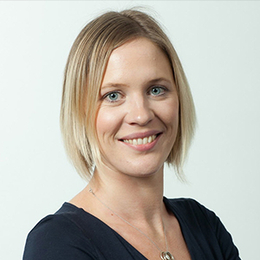A Grocer's Hierarchy of Needs
Anyone who has worked in business long enough – no matter which sector – understands the value of models for growth, or what consultants more technically refer to as frameworks.
In the wayback, the Boston Consulting Group introduced the “Experience Curve,” which for some time helped businesses understand what challenges they might face entering new markets while defending markets where they were already dominant.
Gartner later introduced “Magic Quadrant,” a simple visual template for positioning companies in a wide range of markets (mostly technology) according to two measures: their ability to execute and the completeness of their vision.
Models and frameworks enable a large swath of companies – not just clear market leaders – to agree on what they must do to compete. But, alas, models and frameworks are almost always imperfect. The funny thing about simplicity is that what makes it so great – stripping away excess from structure – is what makes it weak in the final analysis: applying it uncritically can be detrimental.
The idea of models and frameworks for growth came up with a colleague in a discussion recently about the retail industry, where I have worked most of my professional life. The reality is that there really isn’t one. But the deeper we got into the discussion, the more we realized that there is a model for growth that might very well serve grocers well, but it comes from another world. And it comes, of course, with its own limitations. That said, it might be very useful.
The model’s strengths
I am talking about the famed 20th-century psychologist Abraham Maslow’s Hierarchy of Needs. Anyone who has taken an introductory class in psychology knows the model. Based on a seminal paper – "A Theory of Human Motivation" – it articulates the tasks that any human must take to realize his or her potential.
Wildly read and spread by the psychology-reading masses, the construct was at some point (without the participation of psychologist Abraham Maslow, who came up with the hierarchy) pictured as a pyramid. At the base of the pyramid – the foundation, without which a human can't survive – are physiological needs. Are your body and your environment consonant, and if not, what should be done to close the gap? Next tier on the pyramid is safety. Are you at risk because of war, natural disaster, racism or abuse? Next come love and belonging, and then self-esteem. If you can attain both, you can then ascend to the top of the pyramid, “self-actualization,” where you can exercise your free will and human agency to be person you want to be.
Maslow’s theory has been praised as a breakthrough as a humanistic approach to motivating people (as the title of his paper notes) to self-actualize. But there are two other reasons for its success:
- The theory lays down a series of steps that makes the enterprise of self-actualization actionable.
- The theory effectively democratizes the process of self-actualization to make a good and happy life accessible to all.
Maslow based his theory on detailed studies of people like Albert Einstein, Mahatma Gandhi and Eleanor Roosevelt. In essence, he argued that the field of psychology could help the various segments of society – government, social service agencies and the private sector – create many more Einsteins, Gandhis and Eleanor Roosevelts. Each of these people overcame overwhelming odds to become the exemplary human beings and role models we know today.
So, let’s see how the idea of a hierarchy of needs might support the large number of players in grocery, arguably the most competitive retail industry today.
Data-Driven Strategy
At the foundation is data-driven strategy, built on first-party customer data, which retailers uniquely have access to, and which is why disruptors like Amazon are aggressively entering the world of brick and mortar.
Benefit: With data-driven strategies, myriad opportunities emerge for retailers, driving all to the top of the so-called pyramid. There's a large retailer equality gap, and Amazon – one of the first ecommerce innovators in data science – has driven the wedge.
CRM Strategy
Next comes a more sophisticated customer relationship management (CRM) strategy, built on the customer data that retailers possess and brands desire.
Benefits: reduced churn and longer customer lifetime value.
Personalized Messaging
Next comes targeted and personalized messaging to shoppers, again based on the data that retailers possess.
Benefits: increased share of wallet, conversion, larger baskets.
Engagement
Then comes engagement of consumers across the various channels of communications available to them, offline and online.
Benefits: channel adoption, perceived relevance, greater share of wallet, increased efficiencies.
Connected Customer Experience
At the top: the connected customer experience that only self-actualized retailers can deliver to compete in the new era of retail.
Benefits: greater market share, greater connections with brands that sell through retail, including brands that understand that retailers are perhaps the greatest channels for advertising today, because they potentially have access to the best data and systems for engaging consumers today.
A big trend is emerging, reinforced by a recent story about Target’s decision to acquire an advertising firm. Retailers with great customer data are beginning to understand that they need to think and act like media companies, and the thinking and action can lift their margins so they can become more competitive.
The Retail Wheel
Before I conclude, let's briefly backtrack to Maslow. Even though, as mentioned, he didn't imagine his hierarchy as a pyramid, the theory has been fairly criticized on a number of fronts.
First, the research sample and research method – studying the lives of the Einsteins, Gandhis and Eleanor Roosevelts of the world – don't accord with research science. A larger sample, using modern research methods, would help strengthen the fundamentals of the theory and its applications.
Second, the idea of a pyramid at least implicitly assumes that there's only so much room at the top. If one of the points of the theory is to democratize self-actualization, why constrain the funnel?
Third, there's little evidence that someone can't race quickly to the top of the pyramid, bypassing all of the steps to the top, assuming that one has secured the foundations.
As a lifelong sojourner in the retail arena, I can relate to potential detractors of a retail version of Maslow’s hierarchy of needs.
My journey has taken me from London, where customer data science began; to East Asia, where the science has been applied in a number of innovative ways; to the United States, where the biggest battles in retail are being fought today.
I have been inspired – motivated, to use Maslow's language – never to be satisfied in my career, and to move inexorably to the top tier of my craft to better serve my clients. I don't believe that the path to the top for my clients is constrained by a lack of science (that’s what my firm delivers), that there's little room at the top, or that retailers need to follow a strict series of sets to reach the top. What matters is the core – customer data science – which can set the wheel for any retailer in motion.
Pyramids can’t roll. But wheels – one of the oldest frameworks in humankind – can.
With that modest correction, we can realize the intention that both Maslow and his retailer admirers advocate: to make self-actualization motivating, actionable and democratic. This is perhaps the world’s most important industry. Let’s make it happen.










